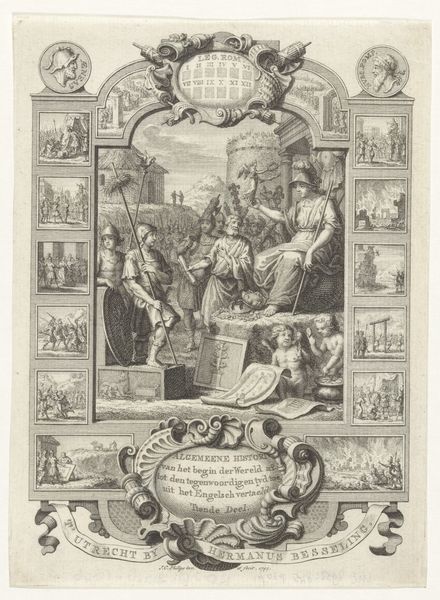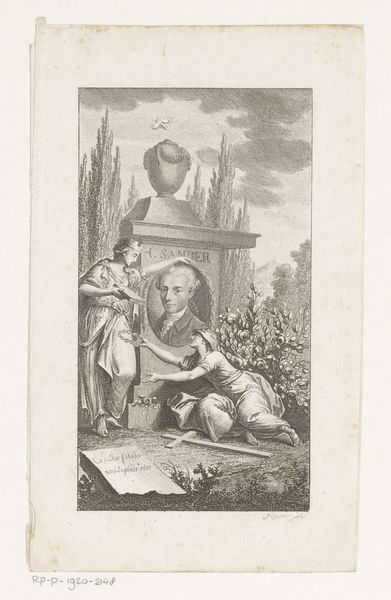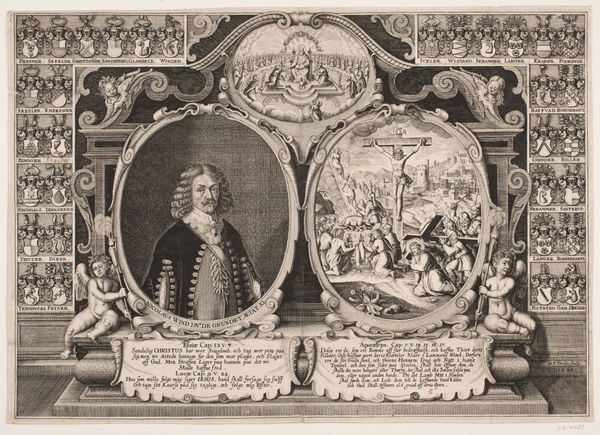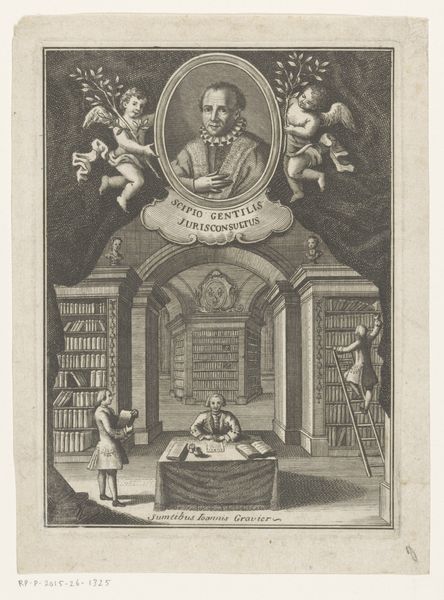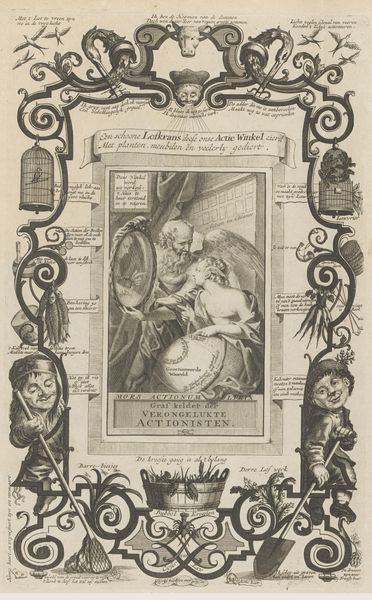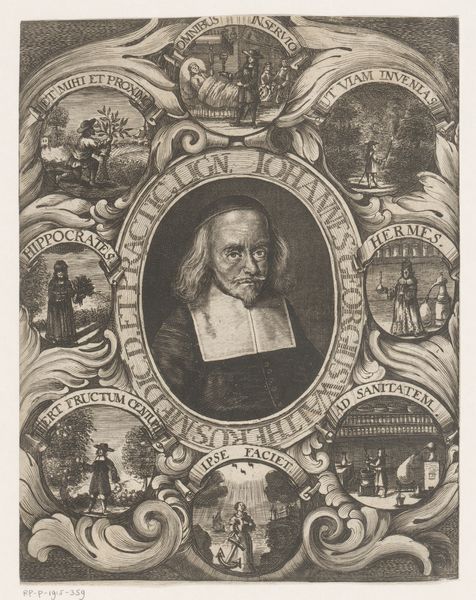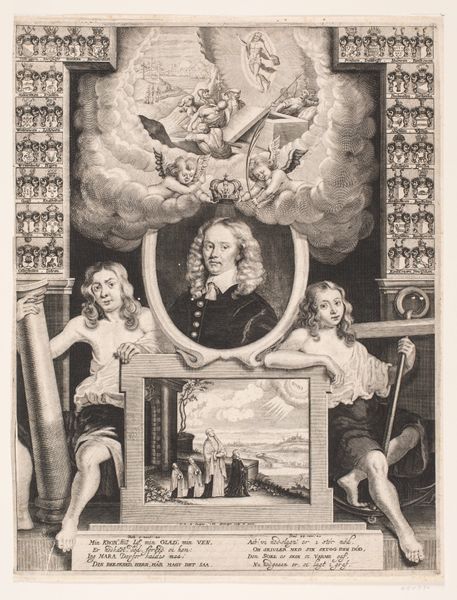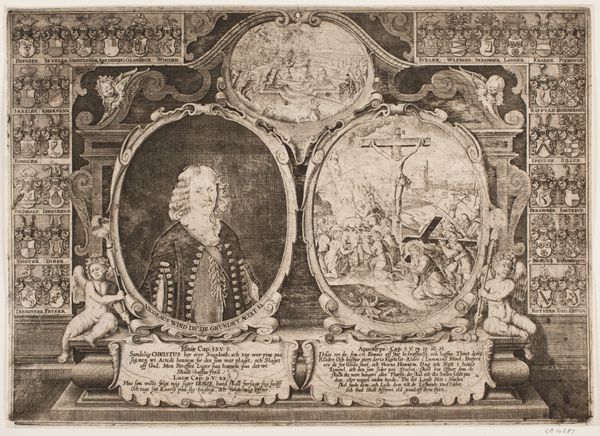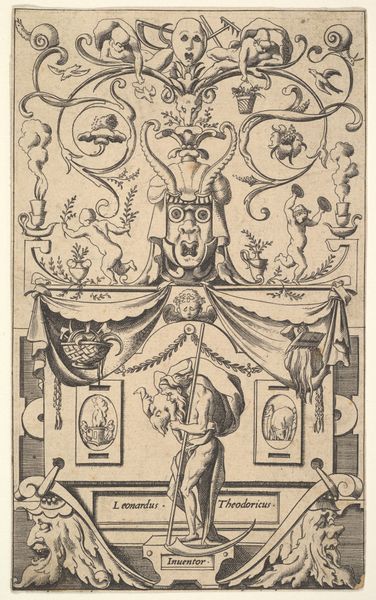
print, engraving
#
portrait
#
allegory
#
baroque
# print
#
figuration
#
vanitas
#
line
#
history-painting
#
engraving
Dimensions: 417 mm (height) x 330 mm (width) (bladmaal)
Editor: This engraving, "Illustration til ligprædiken" by Albert Haelwegh, dated 1657, feels like a symbolic puzzle. There's a portrait surrounded by smaller allegorical scenes, and the whole thing has a rather somber tone. What do you make of this piece? Curator: The 'somber tone' you mentioned signals an engagement with death typical of the 17th century, yes. Consider its function as an illustration accompanying a funeral sermon. These images weren't just decorative; they were actively shaping perceptions of the deceased and mortality itself within a specific cultural context. What socio-political implications arise from idealizing the dead? Editor: That's interesting! I hadn't thought about how the image actively works on its viewers. The vanitas symbols – the skull, the hourglass – feel pretty standard, but framing the central portrait… it elevates the person, almost like propaganda. Curator: Precisely! It’s more than mere flattery; it's about constructing a public image. Think about the role of printmaking at this time. These images circulated widely, reinforcing social hierarchies and religious beliefs. Who do you think had access to prints like this and, consequently, who was most likely to be influenced by its message? Editor: Probably the literate and relatively wealthy. So, this image would primarily impact those already within the established social order. The helmet, armor, and family crest on the bottom could signify a noble lineage or prominent social standing, solidifying this person's legacy within a specific class. Curator: Exactly. And note how that detail further excludes those outside that sphere, both in terms of readership and legacy. Editor: It's fascinating how what seems like a simple portrait can reveal so much about the social and political dynamics of its time! I learned a lot by thinking about this print within its historical context, rather than as an isolated work of art. Curator: And understanding the broader circulation and reception helps reveal those power structures embedded within the art, solidifying an understanding of not just what art is but what it does.
Comments
No comments
Be the first to comment and join the conversation on the ultimate creative platform.


